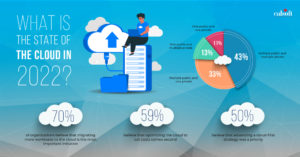The Royal Bank of Scotland (RBS) has 20 million customers across Europe, North America, and Asia. So, when they aimed to be the top bank in the UK in customer service, it was a mammoth task. Additionally, RBS’ data was scattered and siloed across 15 different data sources. Catering to customer needs speedily was increasingly becoming a cumbersome process, and minor financial operations & regulatory compliance required manual approval processes. This increased the risk of service failures further, and making their lofty aim look like an impossible dream.
Fortunately for the Royal Bank of Scotland, they could turn around their situation and deliver exceptional service experiences to the bank’s customers across touchpoints, all thanks to ServiceNow’s IT service management solution and newly introduced workflows that transform financial operations.
With ServiceNow, in just ten 10 months, the RBS integrated and unified their data sources, delivered automated solutions and better customer experience, while also saving 4,600 human hours and moving significantly closer to achieving their goal.
This instance underlines the fact that for financial institutions, customer retention will come through a happy marriage of ease and reliability. But many financial institutions lose customers because they fail to integrate platforms like ServiceNow that automate and simplify financial operations.
Did you know?
Poor customer service experience costs financial institutions $10 billion in revenue per year.
How does ServiceNow’s Financial Services Operations (FSO) help financial operations?
ServiceNow has been a prominent player in the IT Services Management (ITSM) space. It is an innovative tool known to strengthen customer loyalty. Recently, ServiceNow has launched a new product with workflows that automate and transform operations for financial services. This includes the automation of routine processes and requests that end up taking a significant amount of time and human resources.
Another roadblock to efficiency − data in silos − can also be overcome using ServiceNow’s workflow named Financial Services Operations (FSO). ServiceNow FSO helps connect the entire institution or the financial organization with one platform. Here is a closer look at how applications in the ServiceNow FSO help transform financial operations:
Financial Services Payment Operations: The ServiceNow Financial Services Payment Operations application enables the creation and management of tasks for routine customer interactions such as payment requests, payment-related inquiries, and investigations.
Financial Services Card Operations: The application automates processes such as requests for new credit cards, increasing or decreasing credit limits, and blocking or unblocking cards. Due to this automation, credit card applications can be worked on in a quick and hassle-free manner.
Financial Services Loan Operations: The application enables users to manage loan-specific customer service requests and system-generated exceptions. It introduces a simple collaborative process that resolves customer-led requests in no time.
Connect Data Across Departments with the Financial Services Operations Data Model
The Financial Services Operations (FSO) data model allows institutions providing financial services to streamline data and connect operations so that they can benefit from a single platform − a single source of truth. Employees don’t have to spend time and resources looking for answers through unstructured and noisy data anymore.
With the ServiceNow® Financial Services Document Management workflow, you can access a centralized repository to share and track inbound and outbound documents generated and used in workflows across the different FSO applications.
With this impressive suite of applications and workflows, ServiceNow enables efficient and reliable financial services operations that result in enhanced customer loyalty and retention.
Calsoft is a ServiceNow technology partner and is equally committed to bringing innovative solutions for operational efficiency in finance operations with its years of expertise and domain knowledge. Calsoft helps ServiceNow with various stages of implementation cycles by developing specialized plugins addressing customer requirements around finance workflows accurately.
References:
Financial Services Operations | ServiceNow Docs






